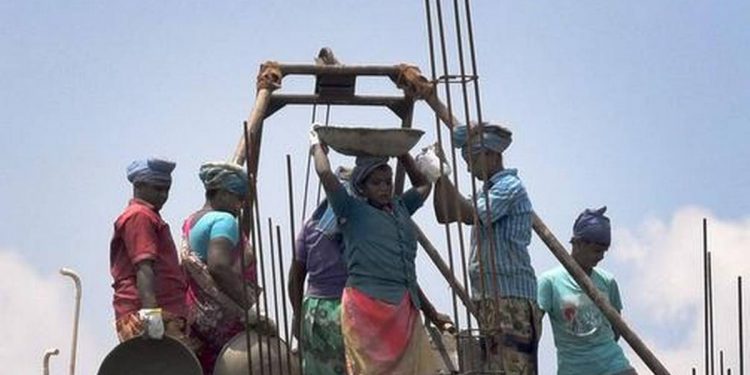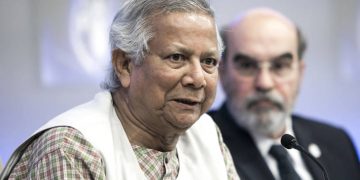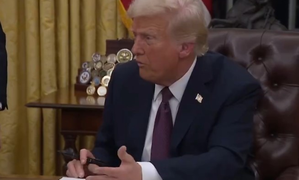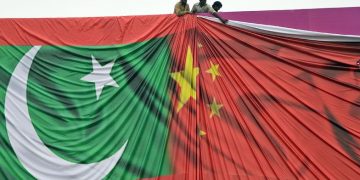Shivaji Sarkar
The repeated natural disasters and Covid-19 lockdowns are taking a heavy toll on India’s economy and hit the informal sectors the most. The Central relief to three states, Gujarat, West Bengal and Odisha is `2,000 crore in addition to states also allocating part funds.
The raging second Covid wave is impacting states’ finances. The Centre has released `8,837.6 crore in advance as the first installment of its share to State Disaster Response Fund (SDRF) for 2020-21. It is a huge sum for a country subsisting Budget expenses on debt.
The World Bank gave $1 billion (Rs 72,000 crore) support to to India’s health sector. The second tranche of $250 million is to be released this year. There is also a $400 million International Development Association soft loan.
The Reserve Bank of India says at end-March 2020, India’s external debt was placed at $558.5 billion, recording an increase of $15.4 billion over its level at end-March 2019. India’s overall debt is $2628.49 dollars or `3.80 lakh crore as on March 2021. Debt servicing cost has also increased. Interestingly enough no money was raised through “masala bonds” as rupee-denominated bonds (RDB) are called in a choppy global market and tight domestic monetary conditions. External commercial borrowings during March 2021 amount to $9.23 billion.
While its debt burden is growing, the domestic situation is a matter of concern. The UNICEF South Asia Regional Director George Laryea-Adjei has warned that the scale and speed of the Covid-19 surge is “outstripping” India and its neighbours’ abilities to provide life-saving treatment to the people and “there is risk of fragile health systems collapsing”.
Even the RBI has expressed concern on India’s growth prospects in its annual report this week as it depends on how fast the country can arrest the second pandemic wave. It sees uncertainties and the only hope is from the bumper Rabi crop or agriculture sector and some activities in housing, road construction, freight transportation and the IT. Interpreted, it means most other sectors remain stagnant or in many cases like the SMEs and the unorganised or informal sector in trouble.
The World Bank in its latest study, ‘The Long Shadow of Informality: Challenges and Policies’, says that India has the highest share, over 70 per cent, and one-third of GDP, of informal employment along with Bangladesh and Pakistan. These workers are excluded from labour laws and social protections schemes. They lose jobs and face extreme poverty and food insecurity as the pandemic has intensified. This diminishes the ability to mobilise the fiscal resources for conducting macro-economic policies and build human capital for long-term development.
Government expenditures also were lower by as much as 10 percentage points of GDP. Similarly, central banks’ ability to support economies is constrained by the underdeveloped financial systems associated with widespread informality. Though global body reports praise India’s free food programmes during the first phase, not continued in the second one, finds even the central bank constrained. It virtually clubs the country with the emerging markets and developing economies (EMDE).
The other concern is that most informal workers are predominantly women and young people (in reality it shies away from saying children). They have little recourse to social safety and suffer severe income losses. “Limited access to social safety nets has meant that many participants in the informal sector have neither been able to afford to stay at home nor adhere to social-distancing requirements” World Bank observes.
“High levels of informality lead to weaker development outcomes. Countries with larger informal sectors have lower per-capita incomes, greater poverty, greater income inequality, less developed financial markets, and weaker investment and are farther away from achieving the goals of sustainable development”, it says.
The report is critical of heavy regulatory and tax burdens being imposed leading to the rise in numbers of informal employment. It castigates Europe, Central Asia, Latin America, the Caribbean, West Asia and North Africa tax excesses.
India needs to learn from the observation as it is resorting to increase taxes of all kinds during these difficult days and even medicines have at least 5 to 12 per cent taxes. The state governments are increasing annual taxes on houses by over 5 per cent and many other facilities including tolls and fuel charges. The various stipulations of GST and its penalties need to be eased if the country has to grow.
The stark revelation is that since 2018 the numbers in the informal sector are growing, though since 1990 to 2018 it registered a fall. This is a pointer to a global slowdown and Indian finances have seen falling during the last three years adding poverty in absolute numbers. Even the jobless in the IT sector and manufacturing has swelled. Many gainfully employed till a year ago are now without an income support. The CMIE recently reported that over 80 per cent people have suffered income losses.
The World Bank suggests that steps have to be taken to improve governance and business climates and harps on streamlining the taxation system for lowering the cost of production and help increase operational margins.
The Central government has repeatedly been suggested to review its high taxation and extortionist approaches. Unless the lowest in the rung, the unorganised daily wagers, are empowered, expecting better conditions shall remain a dream. And yes, it has also to give up cosmetic avoidable debt-funded expenditures like the Central Vista of Delhi. The panacea is simple if adhered to. – infa






































